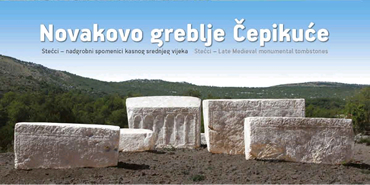Crkva sv. Jeronima, franjevački samostan i lapidarij
Slano, the center of the Dubrovnik Primorje, is located next to the bay of the same name. Numerous
archaeological sites bear witness to the habitation of this area since prehistoric times, and recent
research complements the picture of the turbulent past of Slano and its inhabitants.
Among the many reminders of some ancient times are the church of St. Jerome, Franciscan
monastery and lapidary. The entire monastery complex is located slightly south of the Slano
settlement, positioned at a point from which the entire bay, canal and surrounding hills can be easily
controlled. Just like the very idea of building this complex, its position is not accidental. Namely, in
1399, immediately after appropriating the Dubrovnik Primorje, the Republic of Dubrovnik gave
permission to the Bosnian Franciscans to build a monastery with one goal - to suppress bogumilstvo.
Bogumilstvo was represented by a Christian sect that rejected the church hierarchy. At that moment,
numerous noble families of this region stood out. Thus, the Dubrovnik noble family Lisac had a
monastery built, and in 1420 the church of St. Jerome had the Gradić family built. Church of St.
Jerome was completed in 1461, and the generous donations of Dubrovnik's noble families are
evidenced by a stone plaque with an inscription built on the front of the church.
The entire monastery complex consisted of the church of St. Jerome, the belfry, the sacristy and four
monastery wings to which another, fifth wing was later added. It is surrounded on three sides by a
spacious garden with paths, which includes a lapidary. Lapidary is the name for a collection of works
in stone, for example sculptures and archaeological monuments. Four early Christian sarcophagi and
two graves were found here. The text on one of the found sarcophagi mentions the deceased priest
Anastasius, which is dated 462 after consul Severinus, so it can be concluded that the finds belong to
an early Christian necropolis from the 5th century.
After it was severly damaged in the Croatian War of Independence, over the altar of the Adoration of
the Three Kings from the Church of St. Jerome underwent a complete intervention on the art with
conservation and restoration works. Finally, after 25 years, the main altar was returned to its
function.
Fun fact: The church ship of the church of St. Jerome, it is decorated with seven altars donated by
well-known maritime salt families, and the choir benches were built by Pavao Gradi in 1573.
Share































